Abstract classes and methods are essential building blocks of object-oriented programming in Java. They not only provide flexibility but also a structured approach to software architecture. In this guide, you will learn how to work with the keyword abstract and implement abstract classes and methods in your programs.
Key Insights
- Abstract classes cannot be instantiated.
- They serve as a blueprint for other classes and often include abstract methods.
- Abstract methods must be implemented in the derived classes.
- Using abstract classes promotes clearer structuring and reusability of your code.
Step-by-Step Guide
1. Basics of Inheritance in Java
Start by understanding the concept of inheritance in Java. You have already created a base class called Vehicle that defines basic properties like the number of wheels and color. From this class, you can derive specific vehicles like Car and Bicycle.
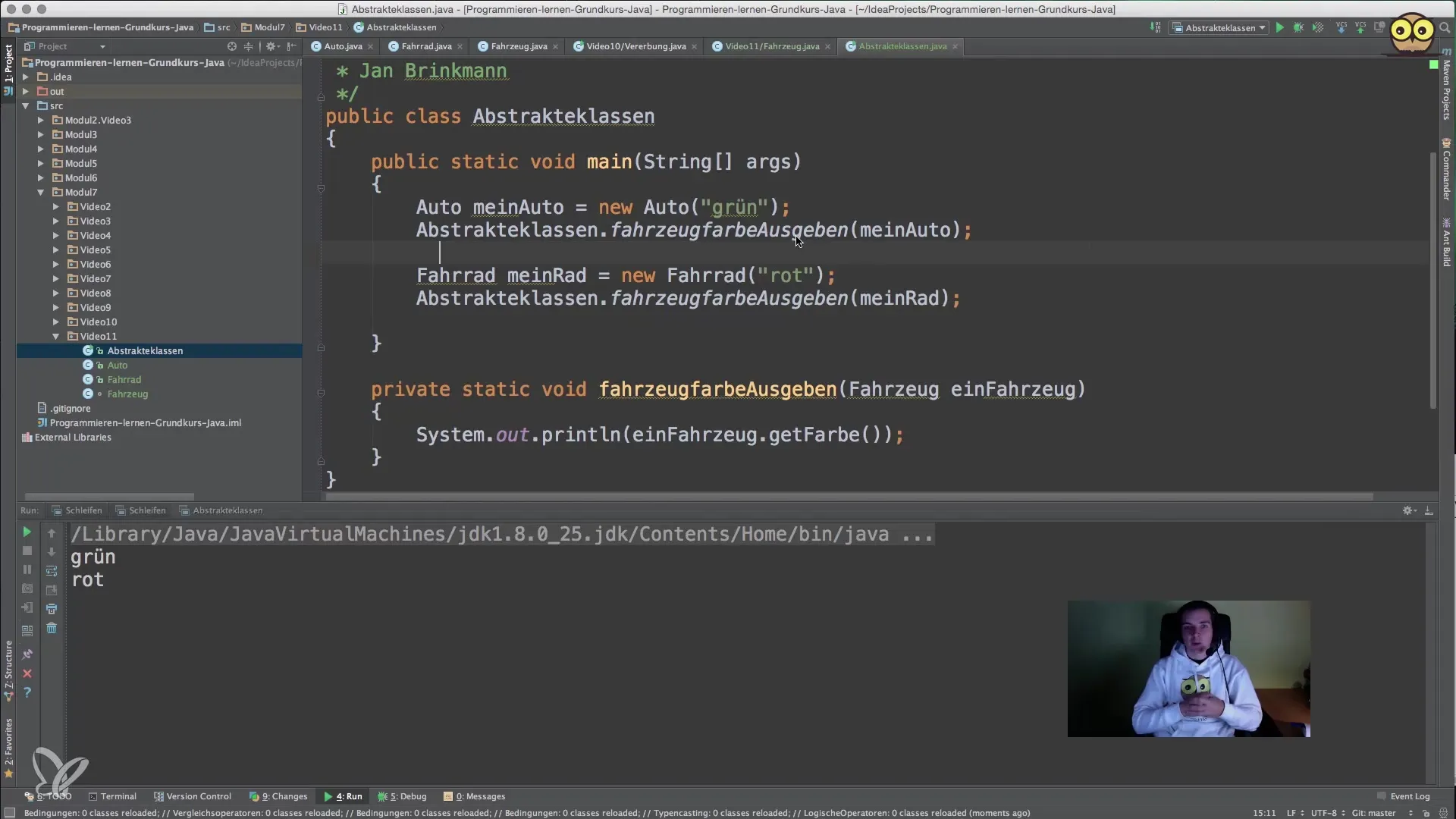
2. Creating an Abstract Class
To create an abstract class, use the keyword abstract. This class cannot be instantiated but serves merely as a template for its subclasses. In your case, Vehicle becomes the abstract class.
3. Defining Abstract Methods
In the extended structure of your libraries, add abstract methods that must be adopted by the derived classes. One such method could be called moveForward. This method should be specifically implemented in each subclass.
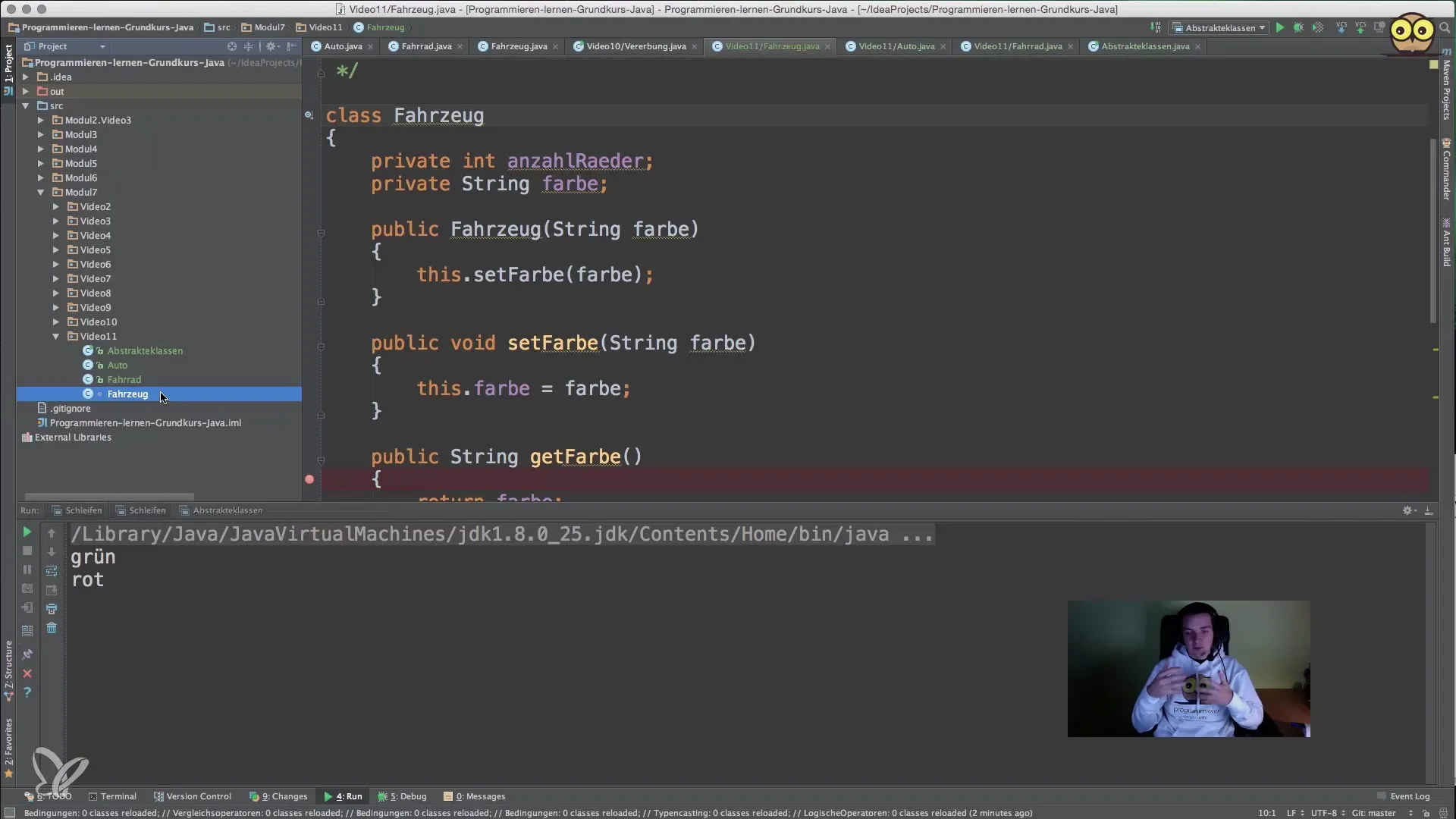
4. Implementing the Abstract Method
You must ensure that all classes inheriting from Vehicle implement the abstract method moveForward. If a class does not do this, an error will be raised.
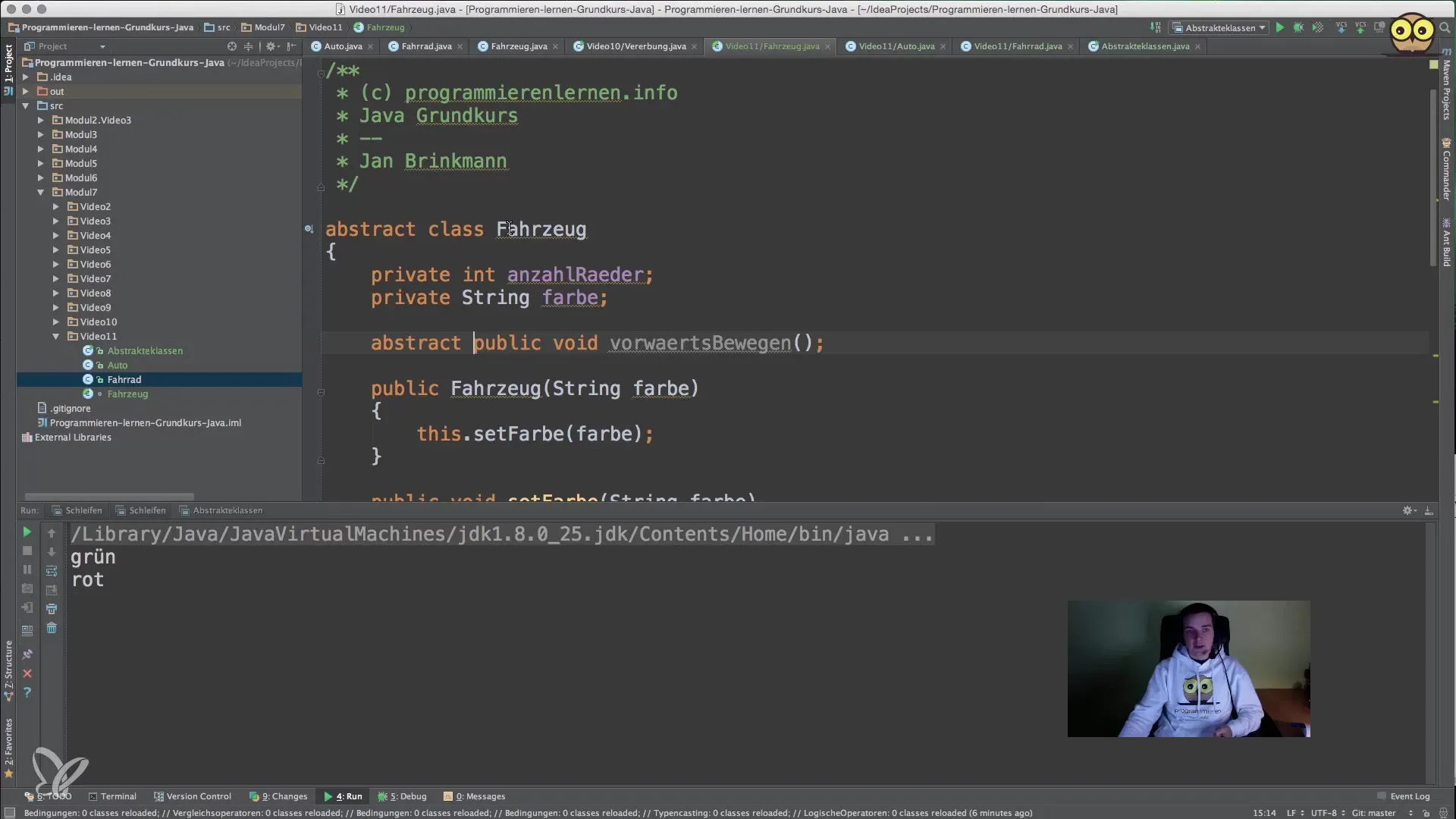
5. Concrete Implementation in Derived Classes
Now it is time to implement the moveForward method in the specific classes like Car and Bicycle. For example, the Car might contain specific logic in the moveForward method such as starting the engine.
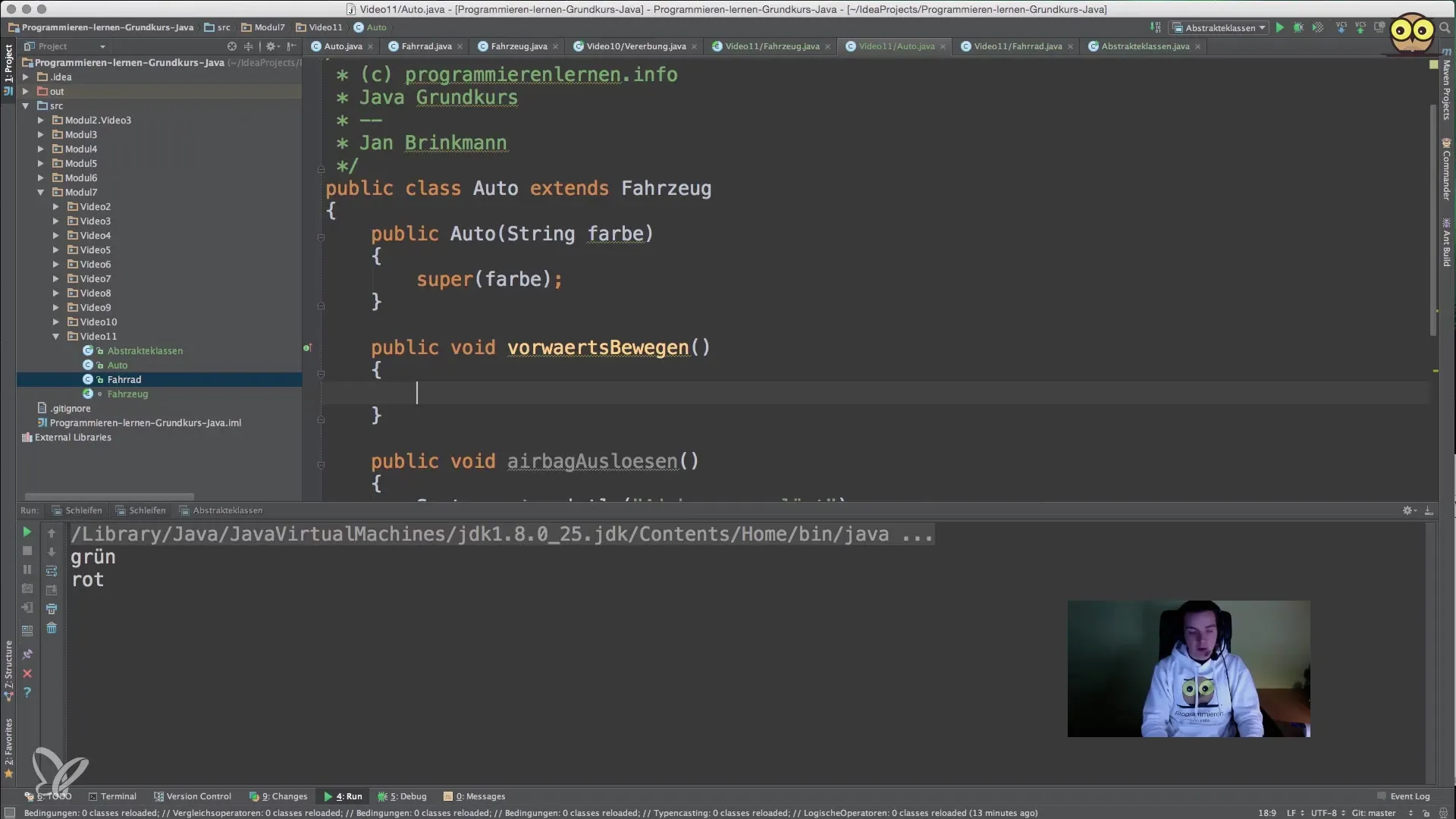
6. Using the New Structure
Now you can use the new structure in your code. Once you instantiate an object of the Car or Bicycle class and call the moveForward method, you should be able to see the specific implementation for the respective vehicle.
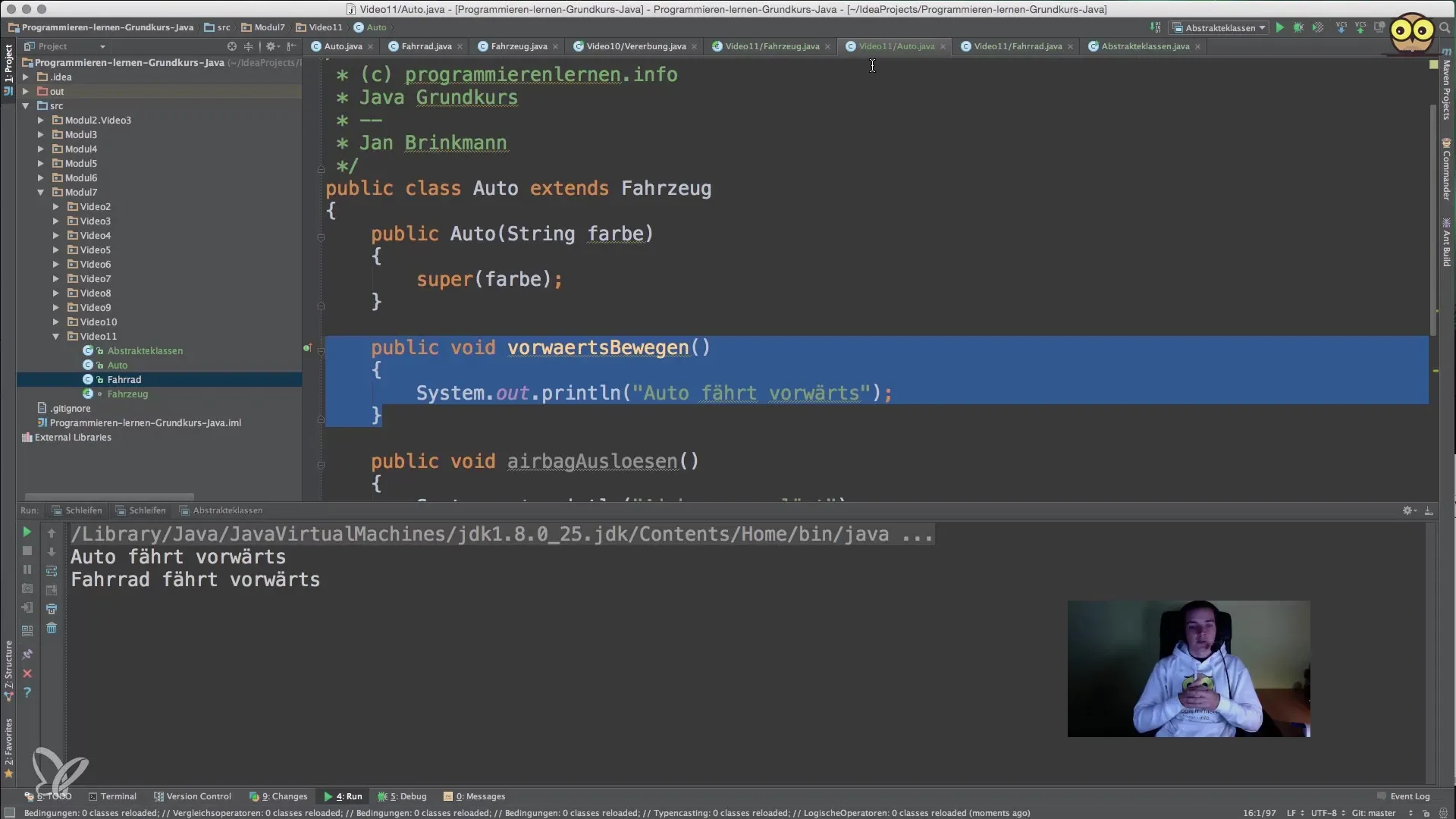
7. Verifying the Principles of Abstraction
Finally, examine how this abstracted structure helps you organize the code. You can ensure that all derived classes implement the moveForward method, while your base class Vehicle is not an instance itself. This ensures that your code remains clear and maintainable.
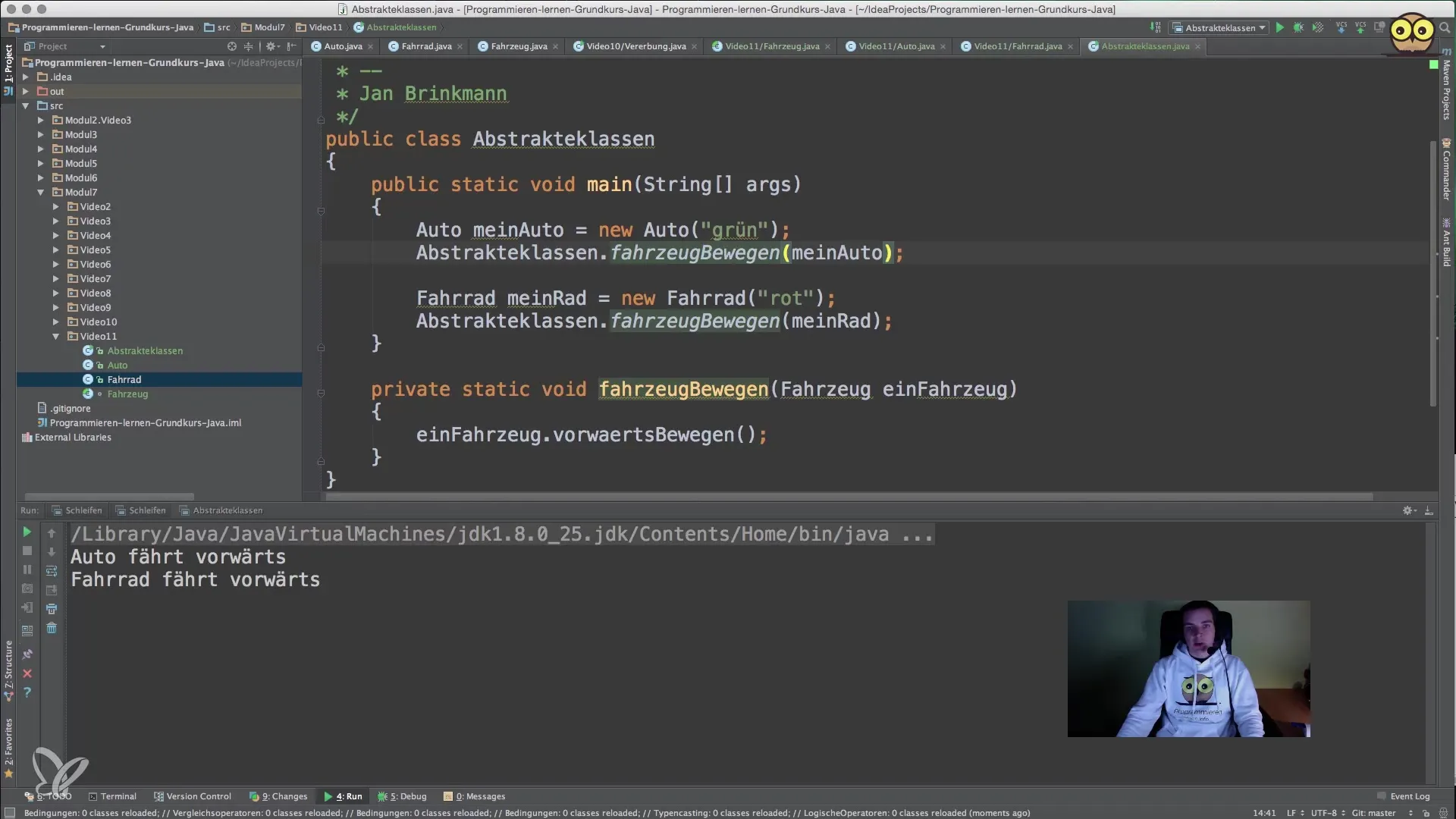
Summary – Abstract Classes and Methods in Java
Abstract classes and methods provide an efficient way to enhance reusability and structuring in your Java code. Refer to your vehicle example to understand how you can successfully implement these concepts.
Frequently Asked Questions
What are abstract classes in Java?Abstract classes are specifications that cannot be instantiated and serve as templates for other classes.
How do I define an abstract method?An abstract method is declared with the keyword abstract and has no implementation in the abstract class.
When should I use abstract classes?Abstract classes are helpful when you want to ensure that all derived classes implement certain methods.
Can I instantiate abstract classes?No, abstract classes cannot be directly instantiated.
How do abstract classes differ from interfaces?Abstract classes can have method bodies and provide an implementation, while interfaces only contain method signatures.


